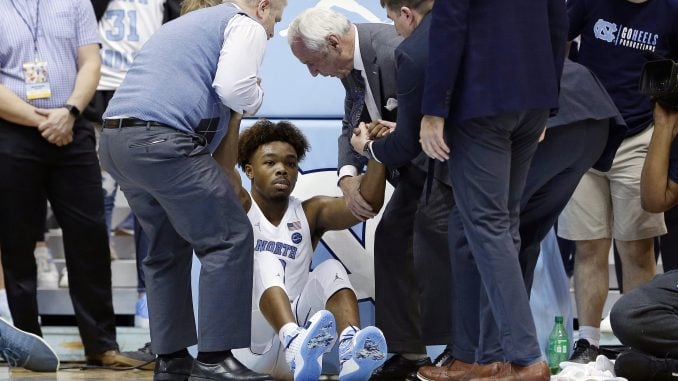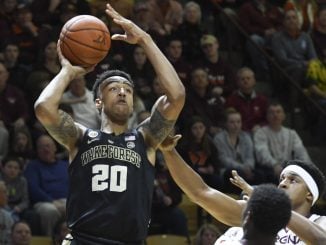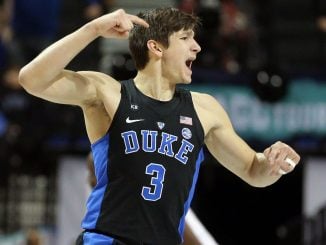
It was a luxury that lasted only until the next game.
On Saturday, in a win against Clemson, redshirt freshman big man Manny Bates was sent into concussion protocol when he took a blow to the back of his neck midway through the first half. Then, with less than two minutes remaining, graduate forward Pat Andree came down on another player’s foot, rolled his ankle and ended up in a walking boot.
Both players were forced to sit out Monday’s win at Virginia, making them the fifth and sixth members of the Wolfpack to miss at least one game because of injury in 2019-20.
“I have never had a situation like this with this many injuries and players consistently being hurt,” a frustrated coach Kevin Keatts said.
He’s not the only one saying that these days.
If misery truly loves company, then Keatts won’t have a problem finding others with which to share his tale of woe.
None of the other ACC teams based in North Carolina have been immune from the injury epidemic that has left all four shorthanded — and in at least two of the cases, short in the win column.
Duke has been without freshman forward Wendell Moore for the past four games because of a broken hand, while point guard Tre Jones, wing Cassius Stanley and shooting guard Joey Baker have all missed at least one game because of injuries.
Wake Forest, which needs all the help it can get, hasn’t had second-leading scorer Chaundee Brown for the past five games because of what is being called a lower leg issue.
As bad as things have been for the Wolfpack, Blue Devils and Deacons, no one has been hit harder by injuries this season than North Carolina.
Not only have the Tar Heels had five players go down — one of which, Sterling Manley, will miss the entire season without having played a game — but on two different occasions, they didn’t find out about an absence until the morning of the game.
Both times, the player involved was a point guard — freshmen Cole Anthony and Jeremiah Francis — leaving no time to adjust or practice with a replacement.
But of all the injuries, including a season-ending ACL tear to freshman guard Anthony Harris, none have been more damaging than the one suffered by Anthony.
One of the best players in the country and UNC’s leader in scoring and assists, Anthony has been out of action since a loss to Wofford on Dec. 15 while recovering from surgery to repair a partially torn meniscus in his right knee.
“On our football team, (quarterback) Sam Howell basically played every down,” said an increasingly distraught coach Roy Williams. “That’s a pretty secure feeling if your point guard, or in their sport quarterback or in baseball your pitcher, never misses any time. That’s not the hand we’ve been dealt this year.”
Anthony is expected back in the next few games. At this point, his return may be too late to salvage a season that has seen UNC lose to Clemson at home for the first time after 59 straight wins and fall below .500 for the first time since losing the opening game of the 2004-05 season.
While the injury bug has bitten especially hard at UNC, State, Duke and Wake, the problem isn’t confined to the Old North State.
An increasing number of players across the country have gone down recently. It’s a problem that is at least partially responsible for the unpredictable nature of the ACC thus far and one many coaches are blaming on the wear-and-tear youngsters are putting on their bodies before they ever reach the college level.
“I think it goes back to high school and AAU basketball,” Miami’s Jim Larrañaga said. “Kids are getting beat up and injured, and they bring those injuries to college.”
UNC’s Williams said he once scouted a recruit whose team played five games in one day during a summer tournament.
It’s a situation Pittsburgh coach and former Duke point guard Jeff Capel said isn’t likely to improve anytime soon.
“I don’t think it’s going to happen on our level organically, because it’s a money-making thing,” Capel said. “It’s a major, major problem and you’re seeing so many young people getting injuries at a younger age you didn’t see years ago.”
And their college teams are forced to adjust on the fly.
“It makes it tougher on us because of the way we like to play,” Keatts said of having to constantly play shorthanded. “We like to go full-court and try to get out in transition, so it’s changed the way we have to play. We’ve had to back off and play more half-court defense than we’ve played since I’ve been here, and that’s where we struggled. We would just love to get healthy if we can.”



